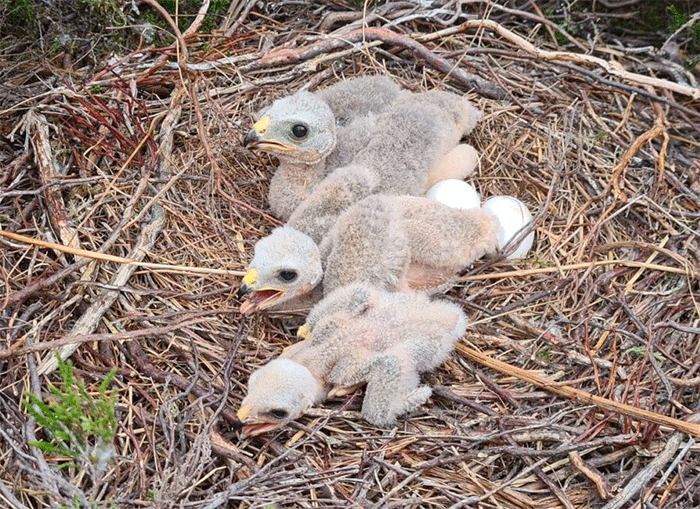Hen Harriers Breed on National Trust Moorland Amid Ongoing Persecution Crisis
Successful nesting in the Peak District highlights both hope and continuing threats for one of Britain’s most persecuted birds of prey

Hen Harriers fledge successfully on National Trust land
Two Hen Harrier chicks raised on National Trust moorland in the Peak District have successfully fledged and been fitted with satellite tags by the RSPB. The chicks, offspring of the birds that featured in dramatic mid-air food passes on BBC’s Springwatch, represent a rare breeding success for a species still under intense pressure.
The nest, which produced three chicks, is the latest in a fragile recovery effort. Over the past five years only eight breeding attempts have been recorded in the Peak District, and nationally there are just 30–40 breeding pairs in England. Last year, only 34 nests were recorded across the whole UK.
Craig Best, General Manager for the National Trust in the Peak District, described the breeding as an encouraging sign that habitat restoration is working: “It is wonderful to see successful nests on the land in our care because it is a good indicator that our work is providing them with the conditions they need.”
Routine persecution on grouse moors
Despite being fully protected in law, Hen Harriers remain one of the UK’s most persecuted raptors, with illegal killings repeatedly linked to driven grouse moors. Studies and satellite-tracking data consistently show birds disappearing in areas managed for intensive shooting.
Mark Thomas, Head of Investigations at the RSPB, stressed the role of tagging in revealing the truth: “Satellite-tagging of Hen Harriers has been a game changer; it tells us what habitats the birds are using and informs us of the place and reason for any mortality. For a persecuted species this is vital, to inform police investigations, to document associated land uses and to lobby for policy outcomes that aim to provide a better future.”
The RSPB is calling for licensing of grouse shooting as a practical step to tackle record levels of illegal killing in the past five years.
Partnerships working – but threats remain
The chicks were tagged thanks to collaboration between the National Trust, the RSPB, the Peak District National Park Authority and the Peak District Raptor Study Group. The partners stress that while habitat improvements are bearing fruit, persecution remains the overriding barrier to recovery.
Best was clear on the challenge: “Despite being legally protected, persecution is still one of the biggest threats to these special birds of prey in the Peak District and across the UK. This is harder to address, but we’re taking action to combat these illegal practices.”
Hen Harriers on the move
One previously tagged bird, fledged on National Trust land in 2022, has since flown over 550 miles between wintering sites in Cornwall and its breeding grounds in the Peak District, underlining the species’ dependence on wide-ranging safe habitats.
Phil Mulligan, CEO of the Peak District National Park, summed up the importance of these fragile successes: “It is vital for our ecosystems and the health of the landscape in the Peak District National Park that we do all that we can to welcome and protect these stunning birds of prey. I look forward to the day when there is a healthy population of Hen Harriers here.”
August 2025
Share this story







